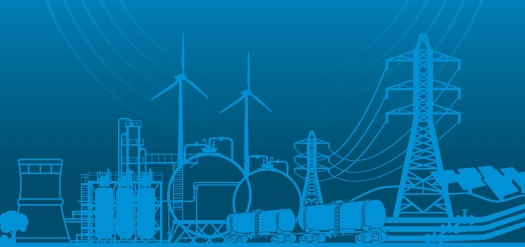U.S. Energy Grid Needs a $15 Billion Overhaul

GLOBE-Net, April 21, 2015– A comprehensive report on the vulnerability of the U.S. energy system released by the U.S. Energy Department calls for investments in the electric grid to protect it from extreme weather incidents and physical or cyber-attacks.
Containing more than 50 recommendations the report calls for major investments over the next decade to improve pipelines, power lines, waterways, railroads and other energy infrastructure critical to the U.S. economy.
The report is the first installment of the Quadrennial Energy Review, an audit of the nation’s infrastructure ordered by President Barack Obama in January 2014 as part of U.S. President’s Obama Climate Action Plan.
This first installment of the QER focuses on energy infrastructure and identifies the threats, risks, and opportunities for U.S. energy and climate security. It examines the energy transmission, storage, and distribution system vulnerabilities and proposes major policy recommendations and investments needed to replace, expand, and modernize the system where appropriate.
The U.S. energy system consists of “approximately 2.6 million miles of interstate and intrastate pipelines; about 640,000 miles of transmission lines; 414 natural gas storage facilities; 330 ports handling crude petroleum and refined petroleum products; and more than 140,000 miles of railways that handle crude petroleum” says the report, but much of it is dated and in need of modernization.
The lack of timely investments in refurbishing, replacing, and modernizing components of the nation’s energy infrastructure has rendered the system old, obsolete and vulnerable, says the document. For example, almost half of the U.S. gas transmission and gathering pipeline network was built the 1950s and 1960s during the wave of construction that followed World War II, it notes.
“Threats to the grid — ranging from geomagnetic storms that can knock out crucial transformers; to terrorist attacks on transmission lines and substations; to more flooding, faster sea-level rise, and increasingly powerful storms from global climate change — have been growing even as society’s dependence on the grid has increased,” says the document.
But the challenges facing the system are different today, notes the report.
The ongoing impacts of global climate change have already been stressing the energy system in a variety of ways. Extreme weather events with high societal costs have been increasing, a trend expected to intensify under continuing climate change.
This means greater vulnerabilities from hurricanes, drought, extreme temperatures, wildfires, more intense precipitation events, and flooding.
Climate change is also driving sea-level rises says the report, which interacts with storm surge and heavy downpours to intensify coastal flooding, and it has been thawing large areas of permafrost in the far North, with impacts on pipelines, roads, and other energy-linked infrastructure.
In all, weather related power disruptions are costing the U.S. economy $18 billion to $33 billion a year, and climate change will only make it worse, concludes he report.
Later this year the U.S. Energy Department will issue the 2015 Quadrennial Technology Review (QTR), a report that will examine the most promising research, development, demonstration, and deployment opportunities across a broad spectrum of energy supply and end-use technologies.
The first QTR was issued in 2011. While the Quadrennial Energy Review is focused on infrastructure and policy issues across the public sector, the QTR is primarily focused on DOE-supported RDD&D to meet national energy challenges and goals.
The two reviews are parallel to and complementary with each other.
- Read the full Quadrennial Energy Review report
- Read the Quadrennial Energy Review fact sheet
- Supplemental QER Analysis



